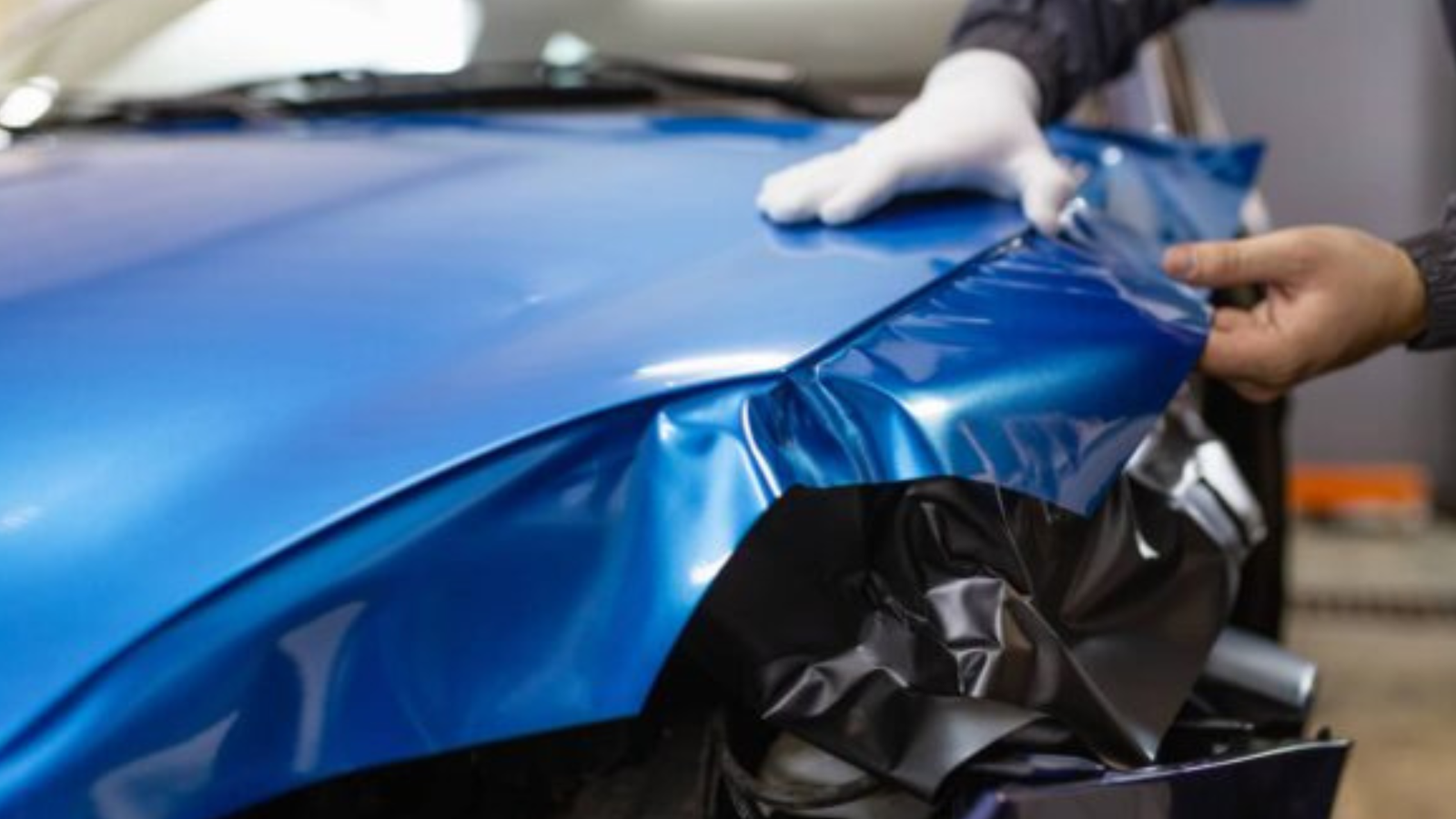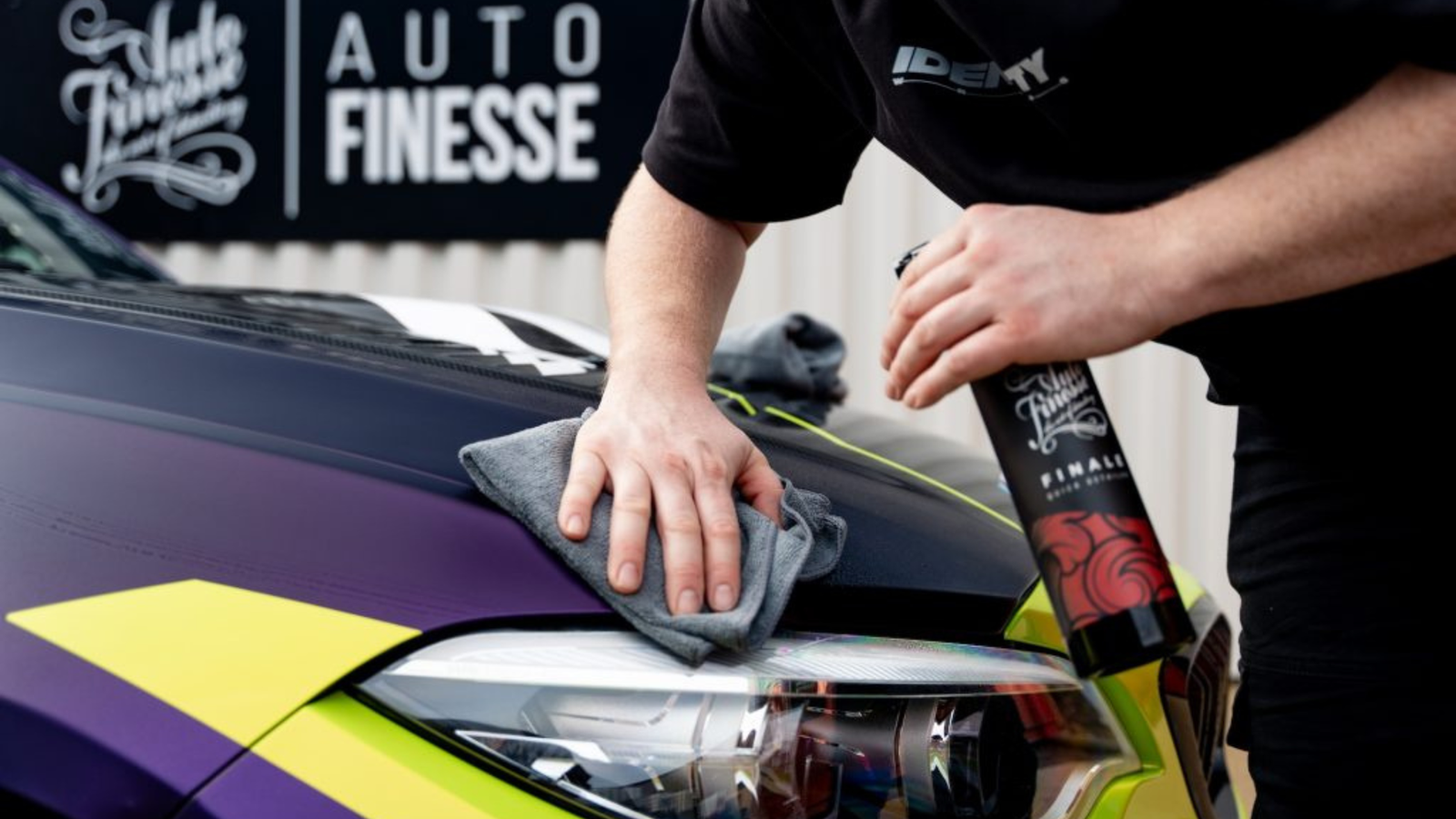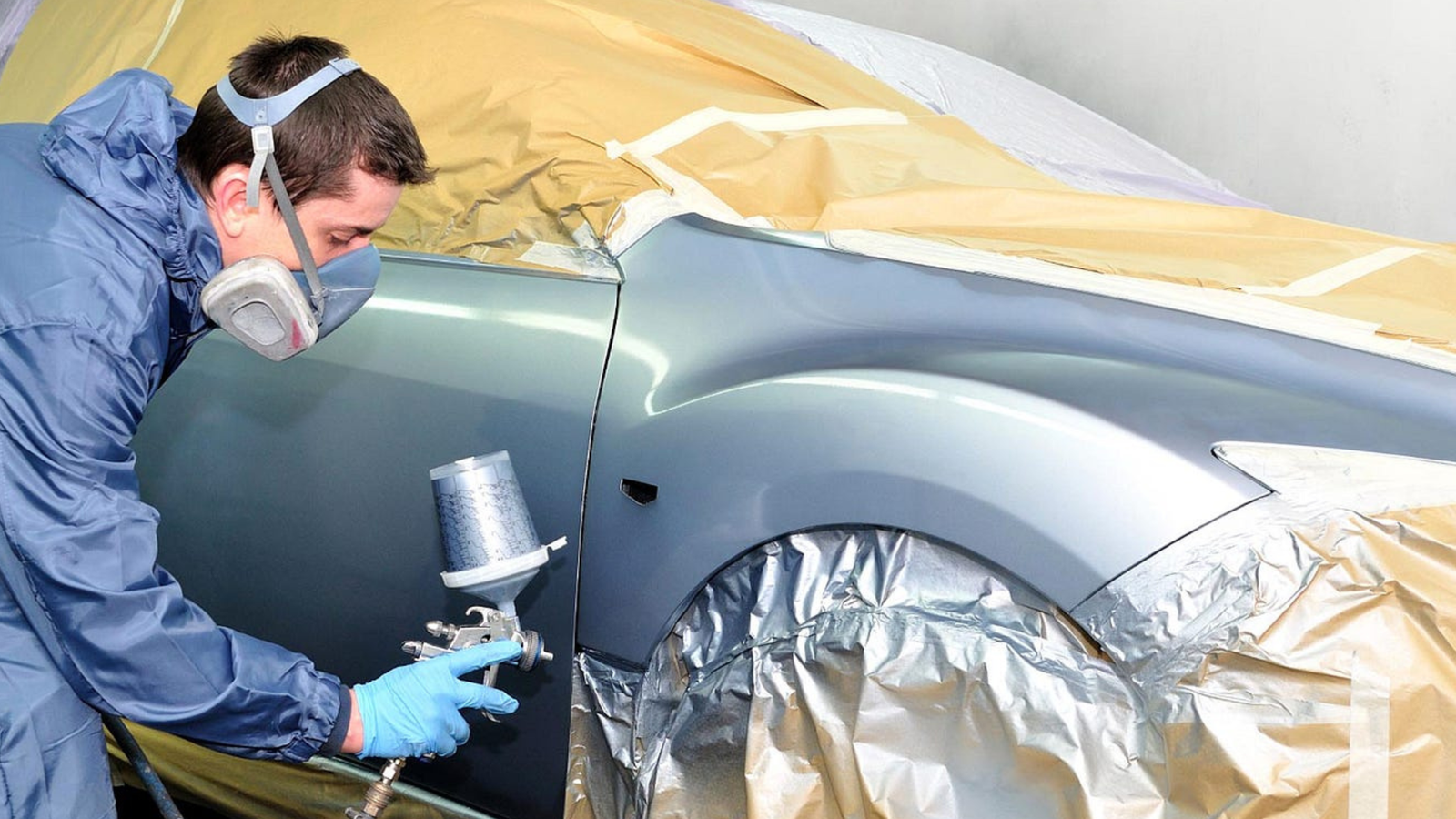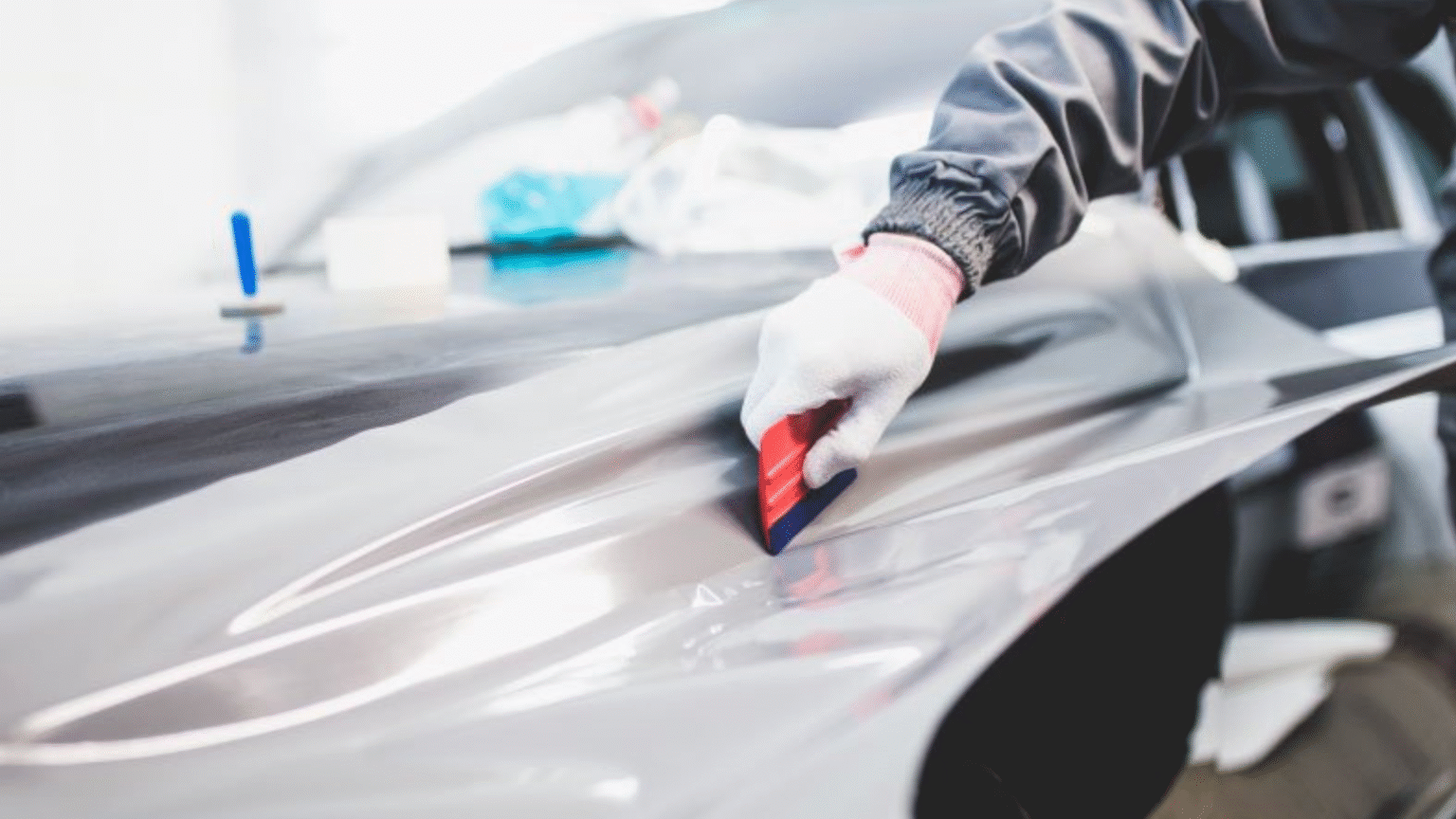When it comes to updating the appearance of a car, most vehicle owners consider one of two options: wrapping or re-spraying. While both methods aim to enhance the visual appeal of a car, many are now leaning toward wrapping over re-sprays—and for good reason. Beyond the visible transformation, wrapping offers a host of hidden advantages that re-spraying simply can’t match.
In this blog, we’ll explore the hidden benefits of wrapping over re-sprays, diving into the economic, aesthetic, protective, and resale value advantages that often go unnoticed. If you’re considering a car makeover, this comprehensive guide will help you understand why wrapping might just be the smarter, more strategic choice.

1. Cost-Effective Customization
One of the most significant hidden benefits of wrapping over re-sprays is the cost. Traditional paint jobs, especially those involving premium finishes or multiple coats, can cost thousands of dollars. A high-quality re-spray might even set you back more than $5,000 depending on the size of the vehicle and the intricacy of the color.
On the other hand, vehicle wraps are relatively affordable. A full wrap typically ranges from $1,500 to $3,500. The affordability of wrapping makes it accessible for car enthusiasts who want to personalize their vehicles without breaking the bank. You can change colors, finishes, and even add unique textures like matte, satin, carbon fiber, or chrome—all without the hefty price tag of a custom paint job.
2. Paint Protection and Preservation
When evaluating wrapping over re-sprays, many overlook the protective benefits. A vinyl wrap acts as a shield, safeguarding your car’s original paint from UV rays, stone chips, light scratches, and environmental contaminants such as bird droppings or acid rain.
This layer of protection means that when you eventually remove the wrap, the factory paint underneath is in excellent condition—possibly even like new. This is a significant advantage for maintaining the long-term value of the car, especially for leased vehicles or collector models where preserving the original paint is paramount.
3. Time Efficiency
Time is money, especially in the modern world. Re-spraying a car can be a time-consuming process. Between the sanding, priming, drying, and curing stages, a professional re-spray can keep your vehicle in the shop for up to two weeks.
In contrast, wrapping is a much faster process. A full wrap typically takes 3–5 days depending on the complexity of the design. If you rely on your car for daily commutes or business purposes, choosing wrapping over re-sprays could mean less downtime and quicker turnaround.
4. Reversibility and Flexibility
Car wrapping is entirely reversible. If you grow tired of the color or design, or if you simply want to revert to your original look, the wrap can be removed without damaging the paint. This flexibility is a major perk for anyone who values variety or plans to sell the car later on.
This reversibility is not just about aesthetics—it’s also about adaptability. Business owners often choose wrapping over re-sprays because it allows them to advertise on vehicles without committing to a permanent change. When the marketing campaign ends or the vehicle changes roles, the wrap can be replaced or removed effortlessly.
5. Enhanced Resale Value
Preserving your car’s original paint directly contributes to its resale value. Re-sprays, even high-quality ones, often raise red flags for potential buyers. They may question the reason for the repaint—was it cosmetic or was it to cover up an accident?
With wrapping, there’s no such ambiguity. Buyers will appreciate that the original paint remains untouched beneath the vinyl, a sign of careful ownership. Moreover, a wrap can even enhance the car’s appeal, helping it stand out in the market.
This makes wrapping over re-sprays an intelligent choice for those thinking ahead about resale or trade-in value.

6. Limitless Customization Options
Today’s wrap technology allows for an almost infinite array of styles and designs. You can choose from a wide variety of colors, including those not available from manufacturers, and add textures or finishes that make your car truly one-of-a-kind.
Want a pearlescent color shift that changes in the light? Prefer a camouflage design or even a branded graphic? With wrapping, the sky’s the limit. And if your style evolves, you can switch up your vehicle’s look again with another wrap.
Compared to re-spraying, which can be costly and permanent, wrapping over re-sprays offers unparalleled freedom for personal expression.
7. Durability and Longevity
Many people assume that paint is inherently more durable than a wrap. However, high-quality vinyl wraps, when installed correctly and maintained properly, can last 5 to 7 years or more. Some wraps are even rated for 10 years in mild climates.
They withstand harsh weather, road grime, and minor abrasions. And unlike some paint jobs, they won’t fade unevenly or oxidize with sun exposure. This makes wrapping over re-sprays a reliable long-term investment, not just a temporary solution.
8. Easy Maintenance
Maintaining a wrapped vehicle is far easier than a painted one. Wrapped surfaces do not require waxing or polishing. Simple washing with a mild detergent and water is usually enough to keep the car looking fresh.
Moreover, some vinyl wraps come with self-healing properties that can make minor scratches disappear with a little heat. This convenience is a game-changer for car owners who want to maintain a sharp appearance with minimal effort.
In the debate of wrapping over re-sprays, maintenance convenience is a strong point in favor of wrapping.
9. Local Regulations and Leasing Agreements
Many lease agreements restrict altering the vehicle’s original paint, making re-spraying a contractual risk. In such cases, wrapping becomes the only viable option for customization.
Additionally, some local regulations (especially in commercial areas) may require vehicles used for advertising to maintain certain standards. A removable wrap satisfies these conditions without violating lease terms or legal guidelines.
Opting for wrapping over re-sprays ensures compliance while still allowing for individuality or branding.
10. Partial Coverage and Accents
Another underappreciated benefit is the ability to partially wrap a vehicle. Unlike paint, which usually requires full-panel coverage to look professional, wraps can be used for accents or details—like roof wraps, hood wraps, or racing stripes.
This opens up creative possibilities and lets car owners enhance their vehicles incrementally. You can even mix and match textures, such as combining a matte hood with a gloss body for contrast.
Wrapping over re-sprays makes these kinds of upgrades feasible, affordable, and stylish.
11. Environmental Impact
Believe it or not, wrapping is also better for the environment. Traditional painting methods release volatile organic compounds (VOCs) into the atmosphere. These contribute to air pollution and can have harmful health effects.
Vinyl wraps, in contrast, involve fewer chemicals and generate less waste. There’s no overspray, no sanding dust, and no need for multiple coats of primer, paint, and clear coat. As the world becomes more eco-conscious, choosing wrapping over re-sprays aligns with greener practices.
12. Business and Fleet Applications
For businesses with vehicle fleets, wrapping is an efficient and strategic move. Whether it’s branding, seasonal promotions, or contact information, a vinyl wrap transforms a car into a moving billboard.
Fleet wraps can be changed quickly and uniformly across all vehicles, keeping branding consistent and professional. And because wraps are temporary, you can update them regularly to reflect new campaigns or changes in contact details.
It’s no wonder that commercial operations overwhelmingly favor wrapping over re-sprays for their vehicles.
13. Insurance Considerations
Depending on your provider, wraps can sometimes lower your insurance premiums. Because they protect the underlying paint and reduce the risk of permanent damage, some insurers consider wrapped vehicles lower-risk in certain categories.
Furthermore, in the unfortunate event of damage, wraps can be spot-repaired—meaning you don’t need to redo the entire vehicle like you often would with a paint job. This can reduce both repair time and claim amounts.
Another subtle benefit tipping the scales toward wrapping over re-sprays.
14. DIY Potential
While professional installation is always recommended for the best finish, vehicle wraps also offer DIY potential for enthusiasts who are skilled with tools and have an eye for detail. DIY wrapping kits are available for those looking to test their abilities or personalize small sections like mirrors or trims.
On the other hand, DIY re-spraying is far riskier. Without a controlled environment and specialized equipment, results can be uneven, drippy, or even damaging. This makes wrapping over re-sprays the smarter choice for DIY car lovers.

Conclusion: Wrapping Over Re-sprays—The Smart Choice
In the ongoing debate between wrapping over re-sprays, it’s clear that wraps are far more than just a cosmetic trend. They offer tangible benefits that go well beyond appearance: protection, flexibility, cost savings, and long-term value retention.
Whether you’re a private car owner, a business with a fleet, or a collector looking to preserve original finishes, wrapping provides a solution that re-sprays can’t easily match. The hidden benefits of wrapping—like environmental impact, insurance advantages, and reversibility—make it a modern, strategic, and creative choice.
So the next time you’re considering a makeover for your vehicle, remember the advantages of wrapping over re-sprays. It’s not just about looking good—it’s about making a smart investment in your vehicle’s future.

